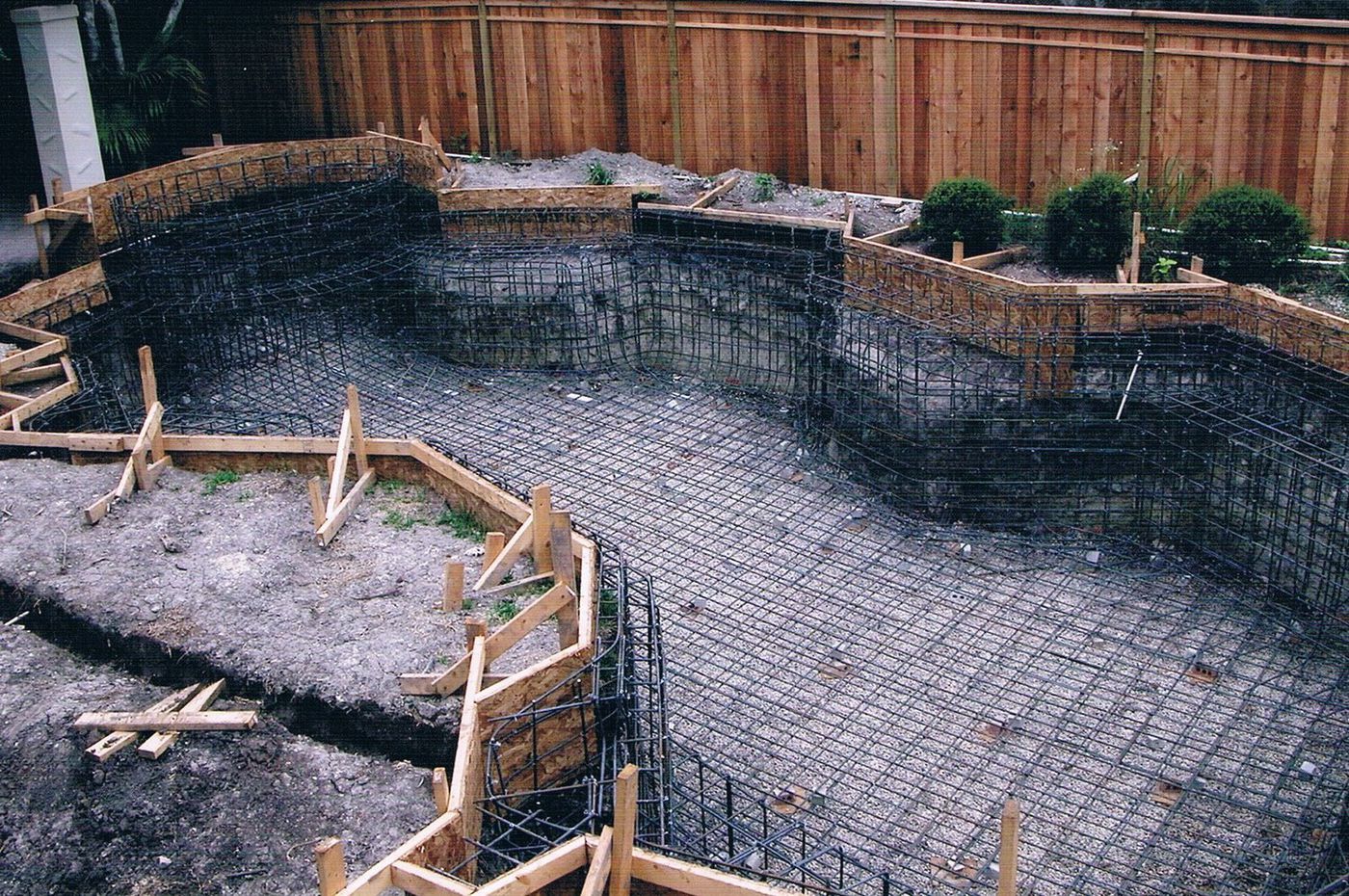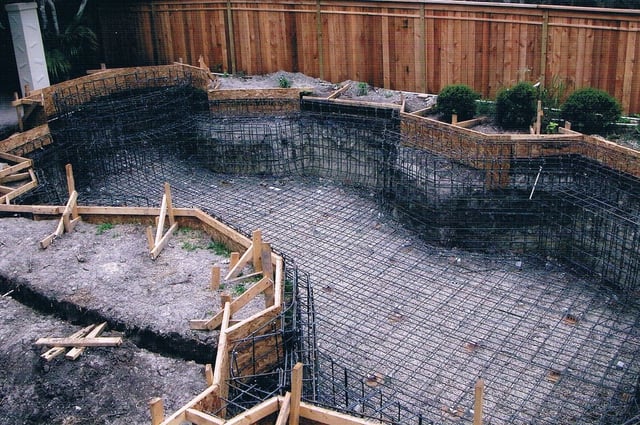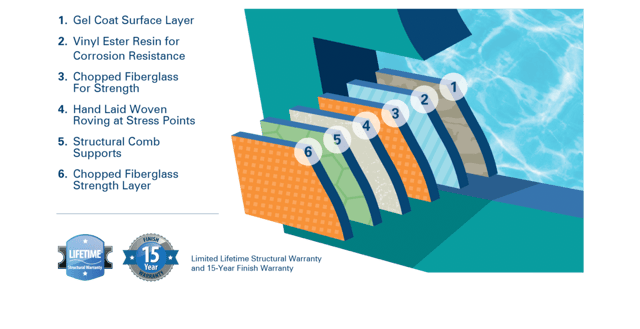
How Thick Should a Concrete Pool Be?
Installation & Construction | Swimming Pool Design | Concrete Pool Information
What’s the best concrete thickness for your pool? If you’re asking this question, you’re probably already looking at and comparing the pool contractors in your area. The vast majority of us can’t DIY a concrete pool; the process is too complicated and technical. You’ll contract professionals to engineer and construct it. Be sure to ask them the relevant questions we lay out in our Swimming Pool Builder Vetting Checklist to confirm their integrity and expertise.
River Pools specializes in fiberglass pools, but we know our way around all three pool types, and we want to make sure you have all the information.
As a way to prove they’re better than the competition, concrete pool contractors may tell you how thick they build their pool shells—but that doesn’t help you if you don’t know what the standard is.
The Best Concrete Pool Thickness
The average concrete strength is 3500-4000 psi. It has a super high compressive strength (it’s difficult to crush) but a low tensile strength—it’s easy to crack if something tries to bend it or pull it apart. This is why you have to support it with steel.
A web of steel (called rebar) frames the concrete so that it can flex. The thickness of the concrete and rebar depends on the environment because the pool has to be able to withstand the forces pushing against it (soil outside and water inside).

To be structurally sound, a concrete pool shell should generally be 6 inches thick. Depending on the engineer and the soil condition, it may be more. (On top of that, the plaster interior finish should be at least ⅜ inch thick.)
The pool will also need to meet the ANSI/APSP standards. If you want to know your pool specs, you can ask the pool builder or engineer for a copy.
As a heads up, concrete pool construction takes 3-6 months. It takes 3-6 days of that time, right after excavation, to place the steel and plumbing and then apply the concrete, typically using the gunite process, so you’ll be able to see the pool thickness fairly early.
Problems when the concrete cracks
Cracks in the concrete can be either in the structure itself or on the surface (crazing).
A structural crack is usually caused by incorrect design or construction. An engineer must design the pool to withstand unstable or expansive soil, and then the construction team must build it as specified. If the pool is engineered or constructed incorrectly, it may structurally fail and leak water.
A craze crack is a light surface crack due to shrinkage. These cracks don’t leak but can cause staining, algae, and calcium nodules.
An Alternative to Thick Concrete
If a concrete pool sounds more complicated than you’d hoped, you may want to look into fiberglass pools as an alternative.
A fiberglass pool is actually stronger than concrete in many ways, and it’s only ⅜ inch thick. Now, math isn’t my strong suit, but even I know that’s significantly thinner than 6 inches. So how does that work?
Here at River Pools, we’ve developed a manufacturing process called Cross-Lynx Composite Technology that allows our fiberglass pools to flex with environmental pressure, without cracking or losing their shape. Six layers of fiberglass materials bond in a chemical process called polymerization. We also add support to the walls and edges where the pool experiences more stress.

Not only does a fiberglass pool as strong and durable as a concrete pool, it’s more flexible and requires no refinishing. The pool shell itself is more size-efficient… so you get more pool in the same amount of space in your yard!
How do concrete and fiberglass pools compare?
These are just a quick overview. For more depth on these contrasts, take a look at our article “Concrete vs. Fiberglass Pools: An Honest Comparison.”
Concrete pros and cons
Pros
- Customizable
- Durable
- Pretty
Cons
- Long startup process (3-6 months)
- Rough surface
- High maintenance
- High initial cost ($50,000+)
- Significant time and money long-term
- Frequent refinishing
Fiberglass pros and cons
Pros
- Fast installation (3-6 weeks)
- Durable
- Low maintenance
- Low lifetime cost
- Attractive
- Compatible with salt water systems
Cons
- Limited size and shape
- Initial cost higher than a vinyl liner pool ($35,000+)
At River Pools, we offer freeform and linear fiberglass pools in Virginia and Maryland (and in other areas of the country through our dealers). If you think a fiberglass pool might be the right choice for you, we’re here to answer any questions you have. Click the button below to reach out to us or to request pricing:
To decide on the best inground pool for you and your family, take time to thoroughly research all the details to ensure you get exactly what you’re hoping for. If you’d like to learn more, our ebook Comparing Fiberglass, Concrete, and Vinyl Liner Pools in the Modern Age provides deeper information about the features and accessories you can get with them. We want to help you make the most of your space and your budget!
Up Next:
Are Salt Water Systems Bad for Concrete Pools?
A Massive Review of Concrete Swimming Pools: Costs, Maintenance, Longevity, and More
A Guide to Inground Swimming Pool Size, Costs, and Prices: Everything You Should Know





